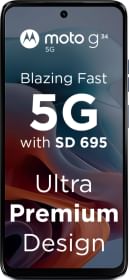Google has revealed a key new feature of the upcoming Pixel 4 phones – Face Unlock. Now, before you jump the gun to say, it ain’t new brother; please hear me out! Yes, these days, almost every other smartphone has a face unlocking feature. Apple’s Face ID is the best-known one. However, Face Unlock and Face ID are similar yet different from each other.
In retrospect, the introduction of this biometric solution in phones dates back to the good old days of Android 4.4 Kitkat in 2011. It was slow, inconsistent, and a gimmick of sorts to say the least. The tech resurrected with the Samsung Galaxy S8 series in 2017. Finally, with the birth of the iPhone X later that same year, Apple Face ID cracked the code to fame. Also, it was ahead of the simple face unlocking of yesteryears. Jump forward to 2019, we have news of what Google is cooking.
Google Face Unlock: In a brief
Google simply calls its treatment as Face Unlock, which is based on a slick sciencey thing called Soli. Basically, on the Pixel 4’s front, there is a miniature Radar chip called Soli that senses your face and unlock it. Soli vaunts to scan your face in any orientation, as soon as you pick up, in one-go motion. So, in theory, this should relieve you from a cumbersome process of lifting the device all the way up, posing in a certain way, and then waiting for it to unlock.

As you can see from the illustration above, Google’s not just using the Soli chip for facial recognition. The thick forehead up top the Pixel 4 display houses an array of chips and sensors. So besides Soli, audio port and the selfie camera, we see an Ambient Light/ Proximity sensor, a Face Unlock Dot projector, a Face Unlock Flood Illuminator and a pair of Face Unlock IR cameras. The latter three in this long queue are the ones found on an iPhone X’s fascia as well (as depicted below).

So, in order to better understand Google Face Unlock, let’s look into the tech behind Face ID.
Face ID: How Does it work?
iPhone X and the latter’s notch island is home to a bunch of tiny modules and sensors, which are collectively christened as True Depth Camera system. Here’s how it works:
When you look at your phone, the Dot Projector showers more than 30,000 invisible Infrared dots on to your face. And, the Flood Illuminator uses the invisible IR light to detect your face, even in dark. Next up, the IR camera reads the dot pattern and grasps a spatial map including the facial features around your eyes, nose, and mouth. The read data is sent to the phone’s processor which compares it with the already registered face data. If it matches, the phone unlocks. Voila!

Apple states that Face ID works best when the device is arm’s length or less from your face (25-50 cm away from your face). It also claims that Face ID should adapt to normal changes in your appearance, such as wearing cosmetic makeup or growing facial hair. However, it might stumble if there is a more significant alter in your appearance, like shaving a bushy beard. Further, it touts to work with hats, scarves, glasses, contact lenses, and many sunglasses in varied ambient lighting conditions.
Principally, Google’s Face Unlock should work akin to Apple’s Face ID since it packs a similar piece of tech. But, Google takes the game to the next step, well at least on paper.
ALSO READ: Samsung Galaxy Note 10+ vs Galaxy Note 9: What’s likely to change and What we know so far?
How’s Face Unlock different from Face ID?

We have been through Soli and other components. But, if you go back to the Face Unlock pictorial representation, you will see not one but 2 IR cameras placed poles apart. These are the purported benefits of the additional IR camera:
- They might be purposed to capture an image twice, one from each side.
- They may work in a 180-degree radius. So, even if Pixel 4 is stationed on a table, you should be able to unlock it.
- In both the aforementioned cases, it should cover more area, map more data, and thusly render a faster and reliable unlock.
- Another possibility could be that you don’t have to stretch your face to grab the phone’s attention.
- Finally, if Google’s employing cheaper modules, then two is definitely better than one as they will synergize for better results.
By now, you may be finding the tech as cool, but what about the safety and security, huh?
Google Face Unlock: Security and Privacy

The search giant reveals that you could use Face Unlock for secure payments and app authentication too. According to Google, your face data is safely encrypted and secured in the phone. Apparently, it won’t be leaving the Pixel 4. Like the Face ID, here too, all processing would be done within the device. It will be safely stored in Pixel’s Titan M security chip, and not in the cloud or on Google servers. Phew!
But, everything might not turn out to be sunshine and roses with the new technology.
Google Face Unlock: Possible problems

When Face ID debuted, it was marred with problems like dubious and slow facial recognition, especially with people of color. We need to understand that Face ID and the upcoming Face Unlock depends primarily on algorithms. They undergo progressive learning and with time they evolve. This is something, even Google mentions in its Soli announcement.
Additionally, they might not work if you use squinty eyes, use them under harsh sunlight, and hold them too close to your face. However, you may treat these as trivial nitpicking.
Down the line, Pixel 4 and its successors should be receiving software updates to improve the tech. And in time, they should work better. That said, we expect it to be a big leap over the prevailing native Android solution.
Google Face Unlock, better than its predecessors?

Currently, smartphone brands except for a few uses 2D mapping with just the front camera. These primordial solutions aren’t safe and can be easily spoofed using a simple photo at times.
Reputed Cyber-Security firm Kaspersky Labs shares a similar opinion:
“an inexpensive phone’s facial recognition relies on just the front-facing camera and some not-so-advanced algorithms. But a regular 2D camera without an IR sensor or dot projector can be easily fooled by photos snagged from a social media profile and printed on paper or shown on a screen.”
Samsung’s Iris Scanner and Huawei’s Spatial Mapping were relevant improvements in this direction. Neither of them, however, couldn’t blow our socks off or blow Face ID out of water. Theoretically, Google’s implementation should be alike or better than Apple’s, as evident from their comparison by far.
ALSO READ: Google Pixel 4 preview: release date, price, news, leaks and everything we know so far
However, we can be sure only once we experience it first hand. Ergo, we will hold our judgment until Pixel 4 and Pixel 4 XL comes out. The new Pixels are expected to launch in October. And for what it’s worth, the tech looks promising for sure.





























